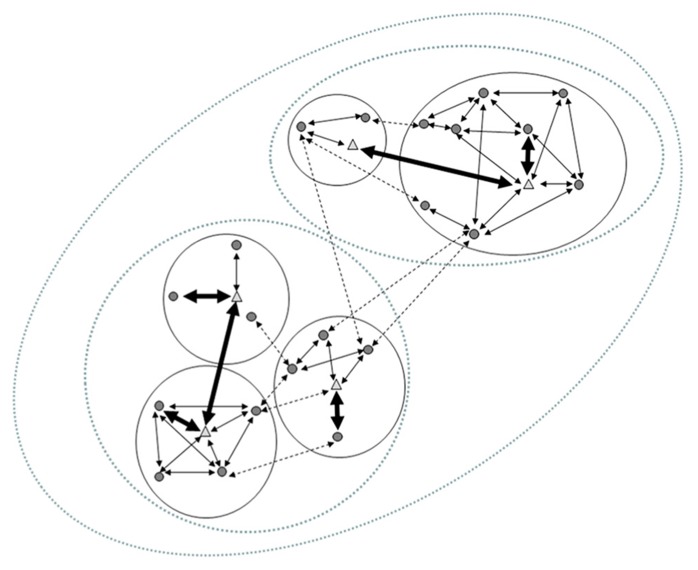FIGURE 2.
The typical structure of the multi-layered Hamadryas baboon society. The smaller social unit (a “one-male-unit”, OMU) in the Hamadryas society is that formed by an adult male (triangles), adult females (circles) and their offspring. In these units social relationships tend to be circumscribed to members of the same unit (expressed here by arrows, representing social relationships -within bold circles). These units are often formed when larger OMUs fission or when young bachelors sequester peripheral (usually young) females from a large OMU; retaining them in close proximity by force and aggression. Adult females in the same OMU are seldom kin. This produces that strong social relationships (bold arrows) are usually established between a female and her unit’s male, not among females in the same OMU. While both sexes can have relatives in other OMUs, social contacts among females from different units are less common (dotted arrows), whereas adult males may in fact establish strong alliances with males from other units (which may actually be their kin) forming “clans” (bold arrows across different OMUs). Spatial association between individuals of different OMUs (e.g., foraging in relative proximity) can result in the third level of the Hamadryas society: a “band” (medium-sized dotted ovals). Finally, different bands congregate in the same cliffs to sleep, forming the largest identifiable group: the “troop” (largest dotted oval).

